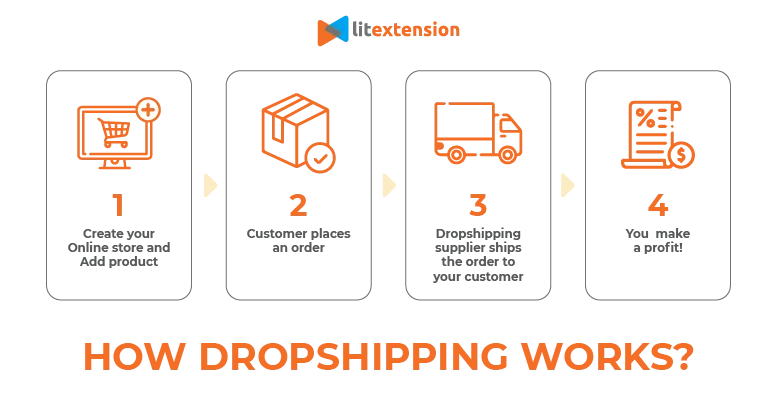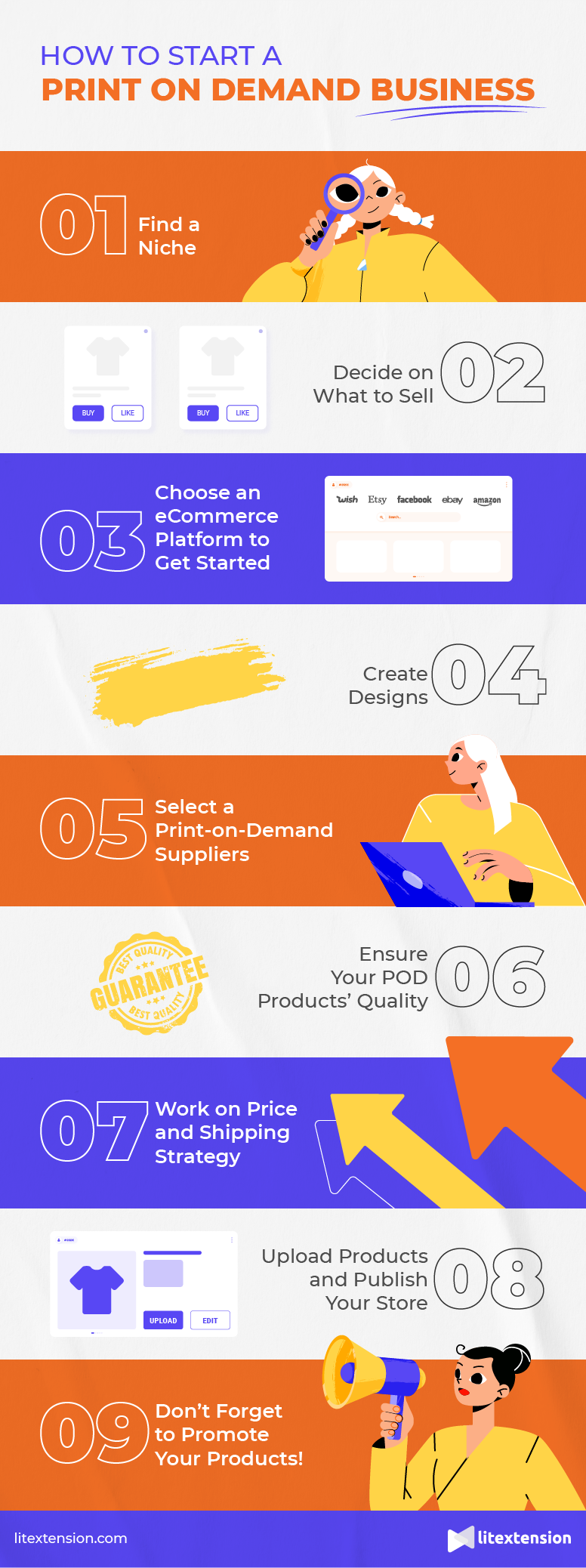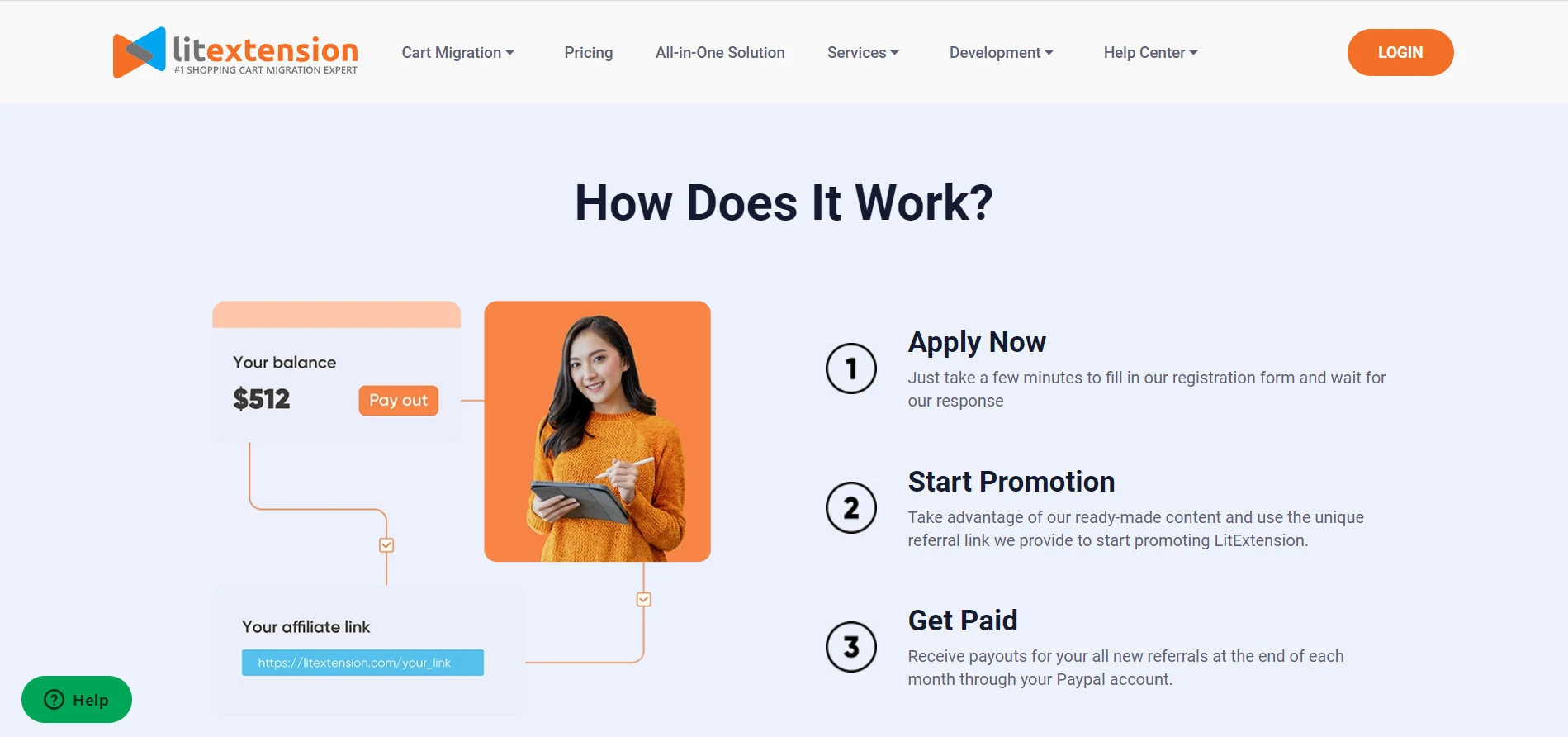Are you wondering how to sell on Shopify without inventory? If so, you are coming to the right place. In this article, we will show you four battle-tested methods to profit from your Shopify store without the hassle of holding inventory on your side.
Here is a sneak peek at the four methods we are going to discuss today:
Let’s dive right in!
How To Sell on Shopify Without Inventory?
#1. Dropshipping
Dropshipping is a popular method for selling products online without the need to maintain inventory or handle shipping logistics. The concept of dropshipping is simple: instead of stocking products yourself, you partner with a supplier or manufacturer who handles the inventory and fulfillment processes.
When you receive an order from a customer, you simply forward the order details to your supplier. Your supplier will then ship the products directly to your customer’s doorstep. This eliminates the need to invest in upfront inventory and manage complex shipping logistics or hire any third-party logistics services.

How to get started dropshipping?
To launch a dropshipping store with Shopify, you can follow these steps:
- Choose a niche: Select a specific product category or niche that you want to focus on.
- Research suppliers: Find reliable suppliers who offer dropshipping services for the products you want to sell.
- Set up your Shopify store: Create a Shopify account and set up your store, including designing your website and adding product listings.
- Import products: Use Shopify’s built-in tools or third-party apps to import product listings from your suppliers.
- Customize your store: Enhance your store’s appearance and user experience by customizing themes, adding branding elements, and optimizing product descriptions.
- Set pricing and payment methods: Determine your pricing strategy and set up payment gateways to process customer transactions.
- Launch and promote your store: Once your store is set up, start marketing your products through various channels like social media, content marketing, and advertising.
Pros & Cons of dropshipping
[wptb id=62315]
Overall, dropshipping can be a viable option for launching an online store without inventory, offering flexibility and low startup costs. However, it’s essential to carefully research suppliers, market your products effectively, and provide superb customer service to succeed in this competitive industry.
[wptb id=62317]
#2. Print-on-demand
Print-on-demand is a highly effective and increasingly popular approach to selling products on Shopify without inventory burden. It empowers you to offer customized merchandise, including t-shirts, hoodies, mugs, and more, by producing and shipping each item only when an order is placed.
With print-on-demand, your focus can be on designing and marketing your products while relying on specialized third-party providers to handle manufacturing and fulfillment.
How to get started with a Shopify print-on-demand?
Here comes a quick guide on how to launch a print-on-demand business with Shopify:
- Identify a niche or target audience for your products.
- Create or source top-notch designs for your merchandise.
- Establish your Shopify store and integrate a print-on-demand app.
- Select the products you wish to offer and personalize them with your designs.
- Set competitive pricing and craft compelling product descriptions and visuals.
- Launch your store and commence promoting your products across various channels.

Pros & Cons of print-on-demand
[wptb id=62319]
The print-on-demand model has some pros and cons. Nevertheless, it remains an attractive option for you to sell on Shopify without inventory. It enables you to unleash your creative flair, engage with your audience, and build a thriving online business.
Read More: Top 15 Best Shopify Print On Demand Apps for Your Online Store
#3. Sell affiliate products
Selling affiliate products is an excellent option if you are searching for an effective method on how to sell on Shopify without inventory. It works by forming partnerships with companies or individuals who offer products or services, and as an affiliate, you earn a commission for each sale that is made through your referral.
This approach allows you to leverage the existing products and brand reputation of others to generate revenue. Take LitExtension, for instance, the LitExtension Affiliate Program is one of the key marketing initiatives we leverage to amplify our revenue and brand growth.

How to get started selling affiliate products with Shopify?
- Choose a niche or product category that aligns with your target audience and interests.
- Research and identify reputable affiliate programs or networks that offer products related to your chosen niche.
- Sign up as an affiliate and obtain your unique affiliate links or promotional codes.
- Set up your Shopify store and design it to showcase the affiliate products you’ll be promoting.
- Write compelling product descriptions and create engaging content to entice potential customers.
- Implement various marketing strategies to drive traffic to your store, such as social media marketing, content marketing, and paid advertising.
- Monitor your sales and commissions through the affiliate program’s tracking system.
- Continuously optimize your store and marketing efforts based on data and customer feedback.
Pros & Cons of selling affiliate products
[wptb id=62323]
By carefully selecting the right affiliate programs and implementing effective marketing strategies, you can leverage Shopify to successfully sell affiliate products and generate revenue without the need for inventory management.
[wptb id=62325]
#4. Sell digital products
And last but not least, selling digital products can be a brilliant idea if you wonder how to sell on Shopify without inventory. With Shopify, you can easily set up a store and offer a range of digital products like e-books, online courses, software downloads, graphic designs, etc.
How to get started selling digital products with Shopify?
Here are the steps needed to start selling digital products with Shopify:
- Sign up for a Shopify account and set up your online store.
- Customize your store’s design to align with your brand and product offerings.
- Install a digital product app from the Shopify App Store, such as Digital Downloads or SendOwl.
- Upload your digital products to the app, including files and relevant descriptions.
- Set the pricing and any additional options for your digital products, such as licensing or file formats.
- Publish your products on your Shopify store, making them available for purchase.
Pros & Cons of selling digital products
[wptb id=62327]
Overall, selling digital products on Shopify offers a lucrative opportunity for entrepreneurs like you to start an online business without the need for physical inventory. It allows you to tap into a global market and reach customers with instant access to your valuable digital offerings.
[wptb id=62329]
Frequently Asked Questions
[sp_easyaccordion id=”62313″]
Final Thoughts
In brief, if you wonder how to sell on Shopify without inventory, you have four main methods at your disposal:
- Dropshipping allows you to partner with suppliers who handle the fulfillment, while you focus on marketing and sales.
- Print-on-demand enables you to create custom designs that are printed and shipped directly to customers as orders come in.
- Selling affiliate products allows you to earn commissions by promoting and recommending other brands’ products.
- Selling digital products, such as e-books, online courses, or software downloads, eliminates the need for physical inventory altogether.
And LitExtension – #1 Shopping Cart Migration Expert hopes, after reading this article, you can leverage Shopify’s powerful platform to start and grow a successful online business without the burden of managing inventory.
Don’t forget to check out LitExtension’s extensive blog site and join our Facebook Community for the latest eCommerce news, tips, and tricks.